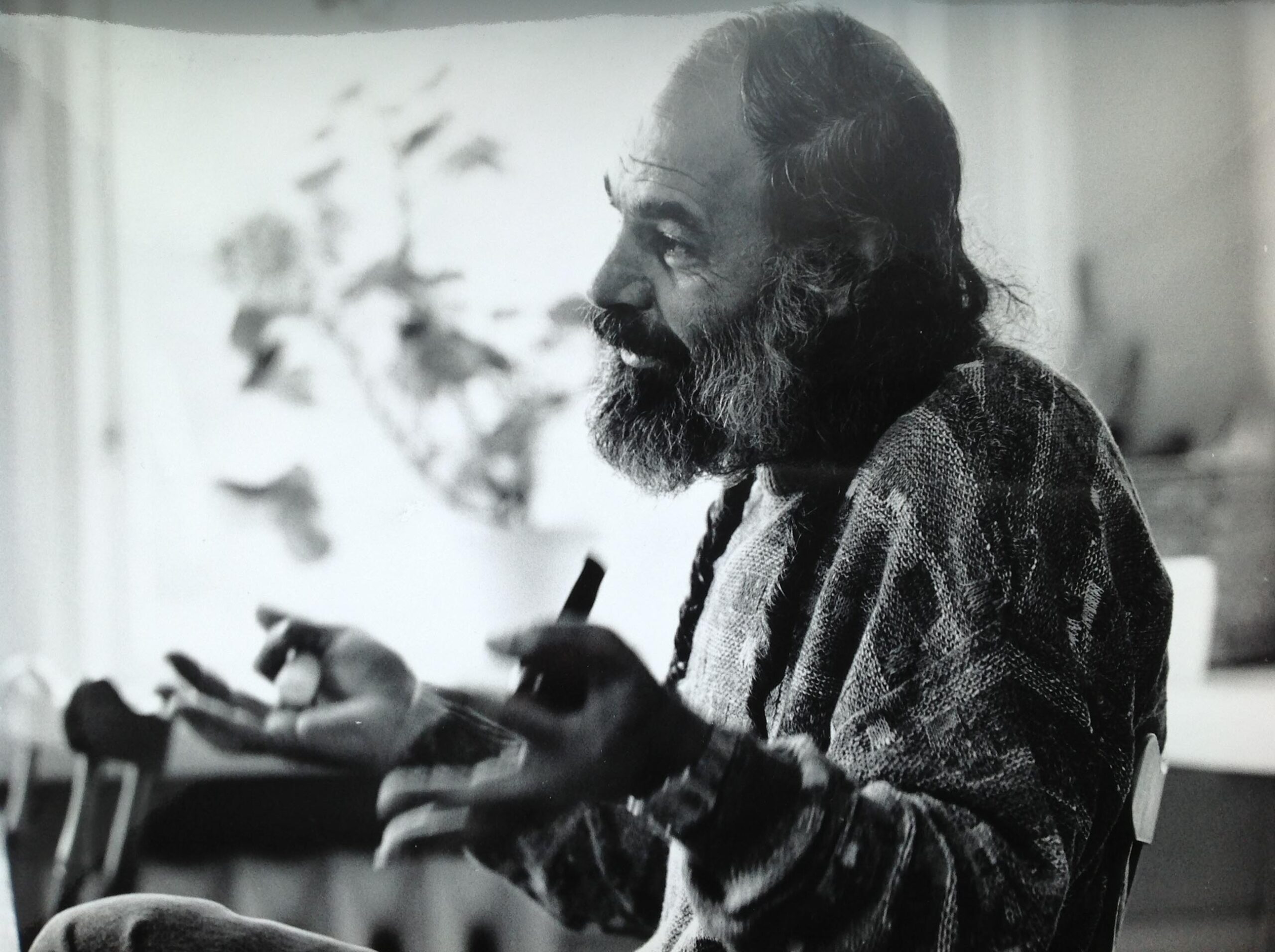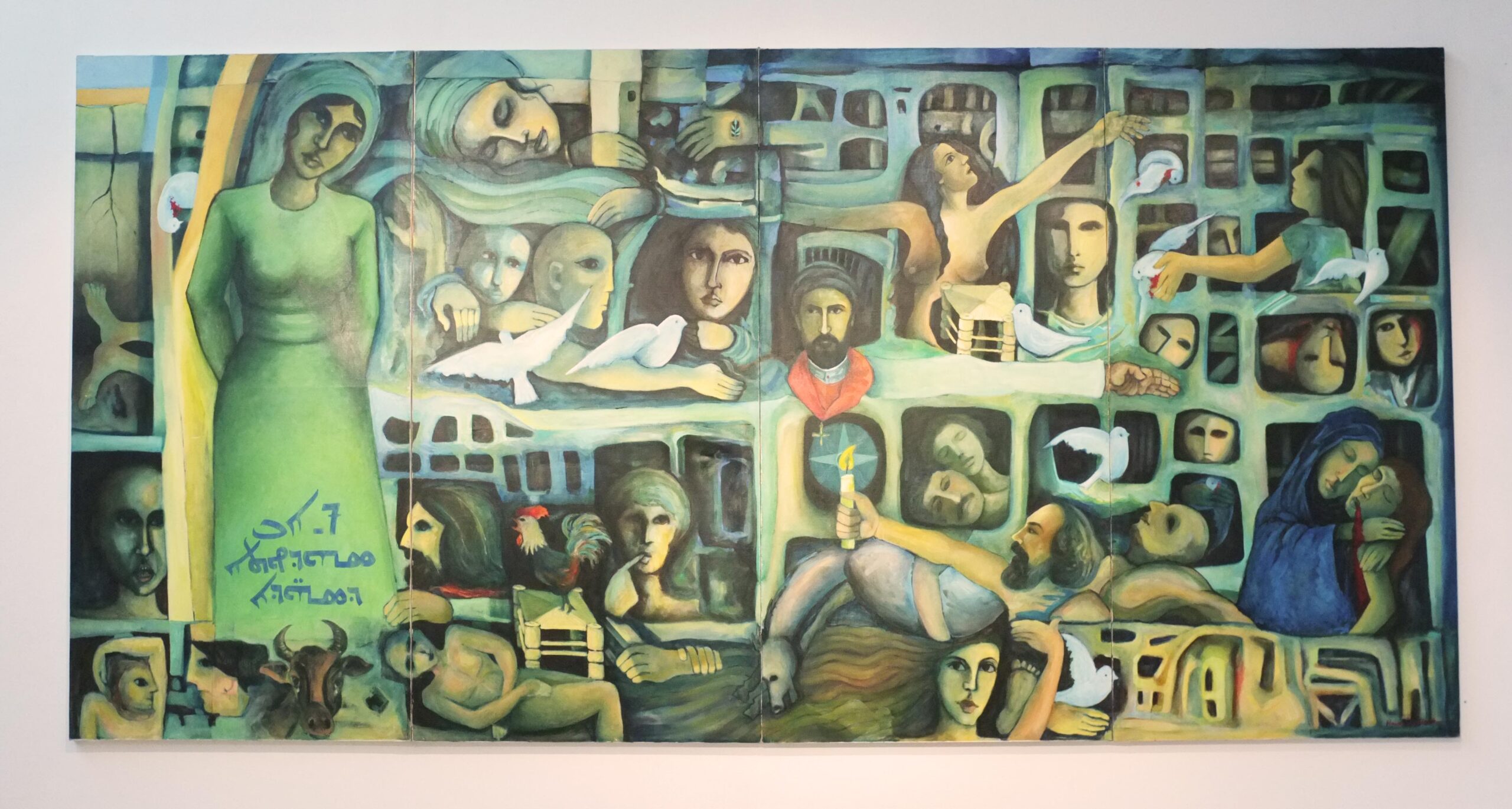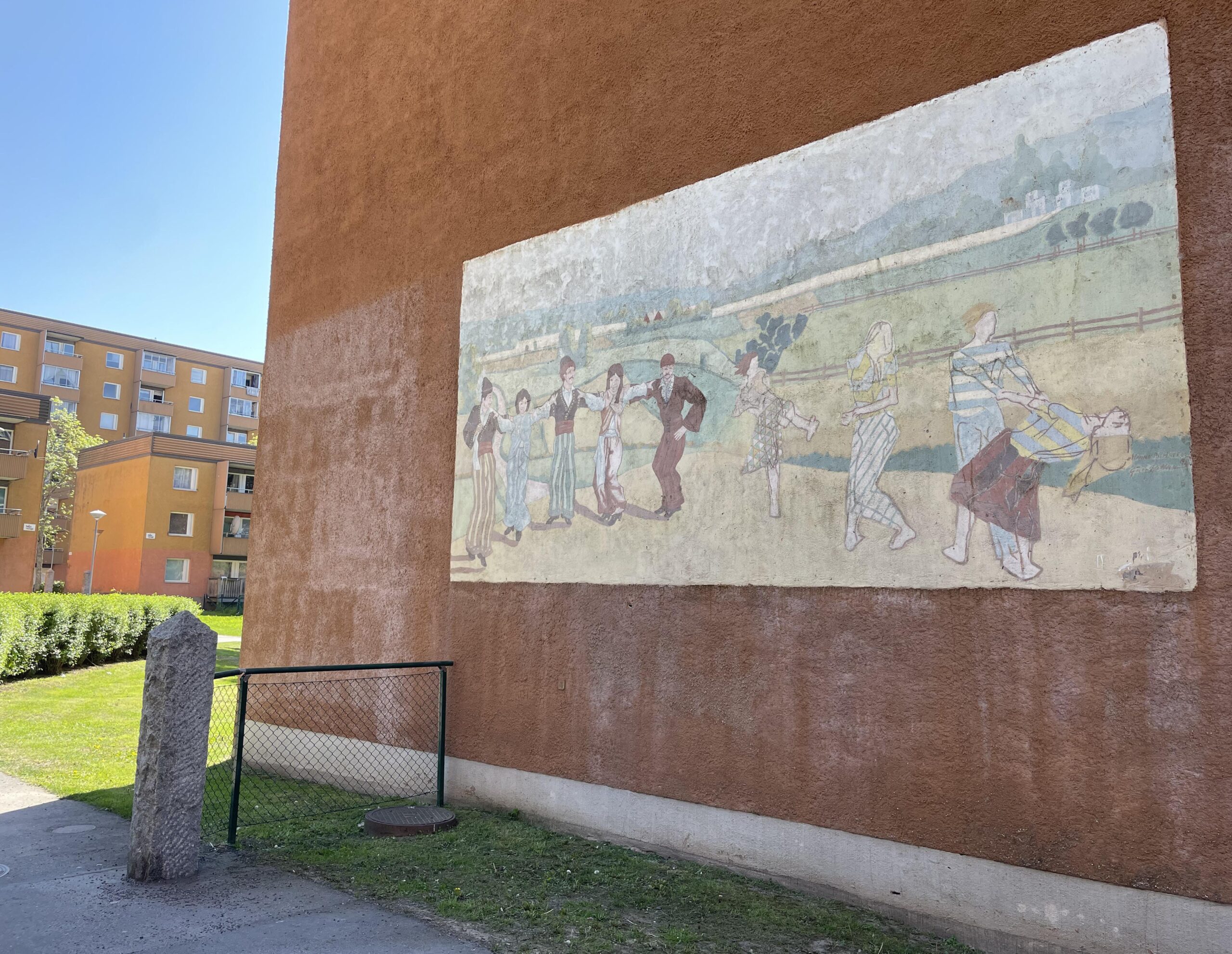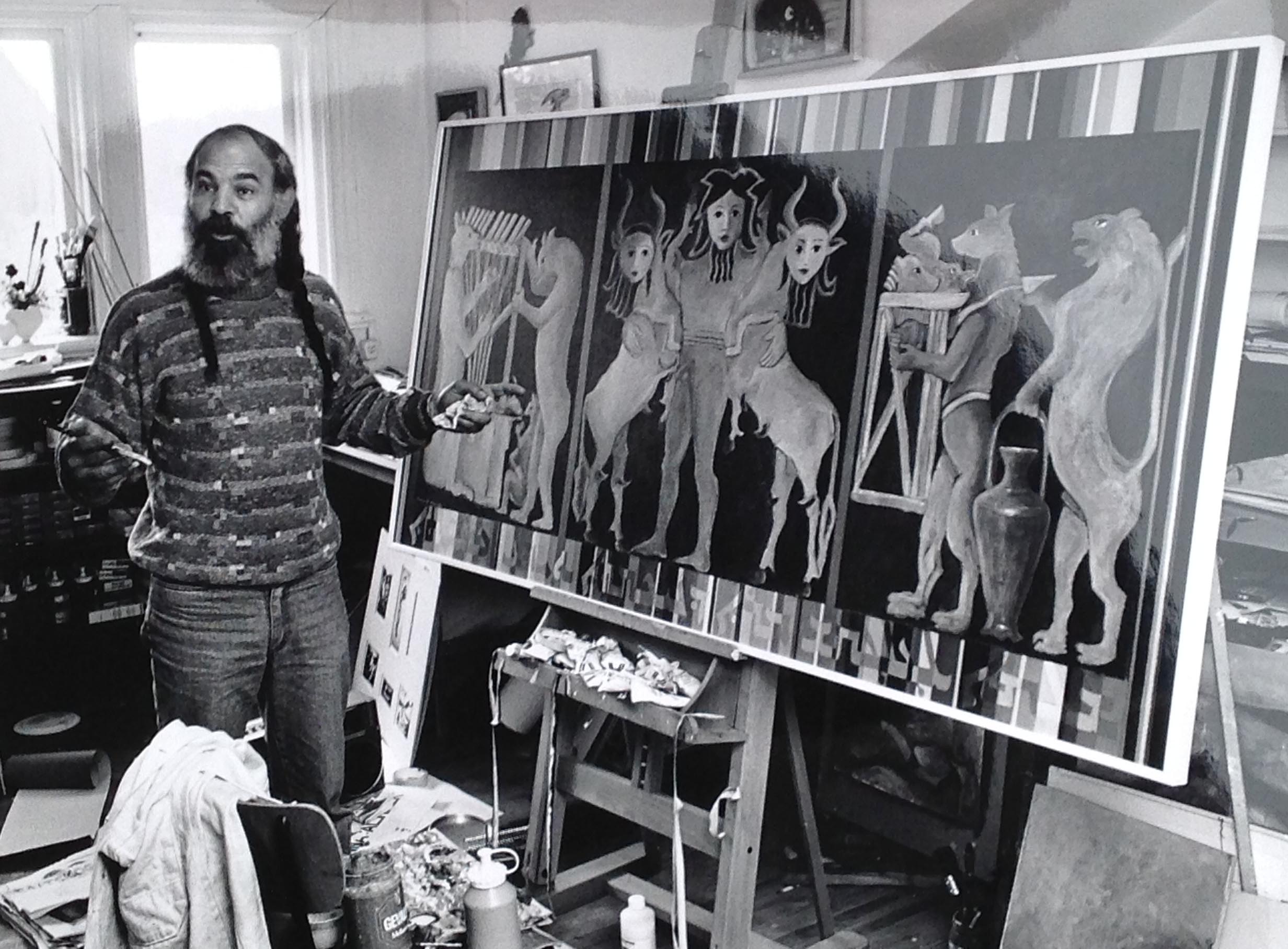
Södertälje konsthall
Texter
I Am The Sun: Hanna Al-Haek
Av Anneli Karlsson, Södertälje konsthall
I Am The Sun: Hanna Al-Haek
Av Anneli Karlsson, Södertälje konsthall
I Am The Sun: Hanna Al-Haek
Av Anneli Karlsson, Södertälje konsthall
I Am The Sun: Hanna Al-Haek
Av Anneli Karlsson, Södertälje konsthall
I Am The Sun: Hanna Al-Haek
Av Anneli Karlsson, Södertälje konsthall
I Am The Sun: Hanna Al-Haek
Av Anneli Karlsson, Södertälje konsthall
I Am The Sun: Hanna Al-Haek
Av Anneli Karlsson, Södertälje konsthall
Texter
I Am The Sun: Hanna Al-Haek
Av Anneli Karlsson, Södertälje konsthall

Relaterat
Hanna Al-Haek (b.1941 al-Hasakah d.2020 Södertälje) lived and worked most of his life in Södertälje, even though he saw himself as a citizen of the world. He was an artist who worked mainly with painting, but graphics and other techniques such as drawing, printmaking and sculpture are also represented in his enormous production. Al-Haek was of Assyrian origin and came to Södertälje 1977. Al-Haek exhibited several times in Syria and has represented his home country in several international exhibitions. Once in Sweden, he has exhibited at galleries and art centres, and he is widely represented in Södertälje municipality’s art collection. Al-Haek has exhibited at Södertälje konsthall several times, most recently in 2015.
Al-Haek is known for his large-scale paintings, but also for his production of very small paintings. He painted and created in various styles during several different eras. His artworks often contain strong symbolism, with links to both his Christian background and Assyrian/Syrian context. Al-Haek passed away in 2020, and today his art is managed and stored by Hanna Al-Haek Foundation administrated by his children Thaer and Rima Al-Haek, which manages Hanna Al-Haek’s art with the aim of communicating and showing the art to a larger audience for more people to join the benefit from Hanna Al-Haek’s rich artistic oeuvre.

The meeting with Hanna Al-Haek
Text by Anneli Karlsson
I don’t really remember when I first met Hanna Al-Haek. He came to Södertälje in 1977 with his family after eight months of placement in the Migration Agency’s accommodation centre in Flen. In Södertälje, he was quickly initiated to the local artists association ‘Södertälje konstnärskrets’ and when the foundation Saltskog gård was formed he was one of the artists who rented a studio in the big old house. Hanna used the largest room on the upper floor at Saltskog gård for a period to create what is perhaps his most central work, Martyrernas minne (the memory of the martyrs) a dedication to the victims who were massacred during Seyfo – the year of the sword in 1915. The painting was large, 280×500 cm, and commissioned by the then director of Södertälje konsthall, Per Drougge to be shown at the Sörmlands Salon in 1985. The Christian symbolism is strong in the painting, medieval icon painting, or altarpieces. The dove as a symbol of the Holy Spirit and as a messenger in ancient Christian tradition. The painting contains many figures. At the bottom right, a man can be seen with an outstretched arm holding a burning candle, a self-portrait. The artist who carries hope in his hand, as a signature to the work, and to life.
I met Hanna Al-Haek many times both within an exhibition context and at Saltskog gård where I also had a studio. Hanna introduced me to the association ‘Poetry and friends of Art’ where I joined and read poetry on a couple of occasions. I was very inspired by New Age at this time, and maybe that’s how we connected. Hanna himself was a practitioner of acupressure. It happened in spontaneous contexts. I remember one time when he pressed on a guy and his nose started to run, something absolutely horrible. A sinusitis cleared up.
Businessman, entrepreneur and diplomat Carl Fredrik Liljevalchs built Saltskog gård as his summer residence in the end of the 19th century, surrounded by an English-inspired park with a hill – a place for contemplation and meditation. Once I sat with Hanna on the hill and I introduced him to the chakra system in relation to the healing powers of crystals. He got to lend my crystals and a book to learn and practice. It took a long time before I got the book back. I didn’t get the crystals back. He became very fond of them. -According to practice, they should move on when you hand them over, he explained.
I have now been told that they seem to be well taken care of. During a visit to the studio managed by Hanna Al-Haek foundation in 2024, son Thaer talks about his father’s great interest in crystals. His sister Rima interjects about her brother -Thaer always walks around with stones in his pockets. The art of surrender.

A while ago, Södertälje konsthall inventoried a mural painting by Hanna Al-Haek and artist colleague Göran Pettersson. The mural is placed on gable on a house in Hovsjö at address Granövägen 86, in the district where Hanna also lived. The work was created in 1983 with small improvements in 1992.
The mural consists of a motif with Assyrian dancers in folk costumes in a Swedish summer landscape and a group of young people in Swedish clothes, dancing in a landscape from the Middle East, was a particularly beautiful cultural exchange. Hanna painted his Assyrian dancers in Göran’s part of a Swedish landscape and Göran painted them with Swedish clothes in Hanna’s. The painting is 6 m wide and 3 m high in bright and clear pastel colours. It radiates pure joy, perhaps that is why it is spared from graffiti and in such a surprisingly good condition even today.
And my eyes turned into two rivers
However, my strongest meeting with Hanna came much later. As I continue to rummage through the archive material for this exhibition, I find the poem Episodes drawn from the body of experience. Hanna used to say that he had two buckets of water when he painted. The water of the two rivers of ancient Mesopotamia. The area around the Euphrates and Tigris, the origin of the Assyrian people. The water that was also united in his paintings. I start reading the poem out loud to myself. My eyes turned into two rivers. I tried again. I rummaged through the copies I brought home from the archive. Suddenly the archive pile got split up, and a paper fell on the floor. A photo of a laughing Hanna, and I heard him say: -But it’s supposed to be damn funny too Anneli!
The poetry is translated from the original Arabic by Hanna and his son Thaer. Hanna’s poetry is rich in images, like sweeping film clips over the streets and alleys of the home landscape, deserts and seas, across to other continents. A restlessness or rootlessness that pervades the entire suite of poems, which belongs to the refugee, can be found in the poems. Variation on fleeing or flying returns. ‘/…The rivers, whose bridges I passed, sang a deep song, stabbing a knife in the throat of the fleeing joy, afraid, afraid as a sparrow for a day…for a year…for a few hundred…thousand years… we had a flying carpet./…/’.
There are many stanzas in the poem that bear witness to the cultural experience. We meet some characters in the poem: the artist, the mother, the sailor, the thieves, the children, the lovers. The Christian symbolism, the prayer and the cry to God. The poet self identifies with a monk. ‘To become a monk alone, crucified with silence and meditation’ in the same poem we get an explanation for the stanza that testifies to division and hurt ‘For we are one for thousands of generations…and because you are different from me, and I from you we spread, like the wind in the blowing snow days and the earth sucked out our roots…Spring streams and floods, moved our children. We became unfinished works, influenced…’
I am the sun
The title of this exhibition, I Am The Sun, is made for Hanna Al-Haek. In the solar system, he is probably best identified as the sun itself. I remember that he loved to sit outside the house Saltskog gård, to catch the first rays of sun in the spring with his shirt off. But the sun is closely followed by the much more inscrutable moon. It is a humble sun we meet. I end with his own words:
‘/…/ Last night I prayed for me…for you…for a sound, and for the others…the circles climbed its coloured walls. I discovered my creative self and mingled in me sight and vision Truth shone, like the sun, wounding the silence with its nails, born in the light I whisper a deep secret in your ears… …and nothing…no light…’
Hanna has left us since a couple of years and his rich art production is now managed by Hanna Al-Haek foundation run by his children Thaer and Rima Al-Haek. The two enthusiasts carry on their father’s legacy with high ambition. Hanna’s collection can be viewed in the center of Hovsjö, Södertälje. The door to the premises is open as soon as the siblings can be there, and they often and happily receive individual and group visits.
Text by: Anneli Karlsson, Assistant, Södertälje konsthall.
